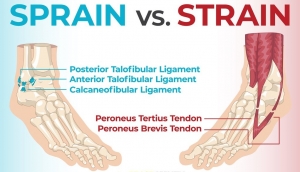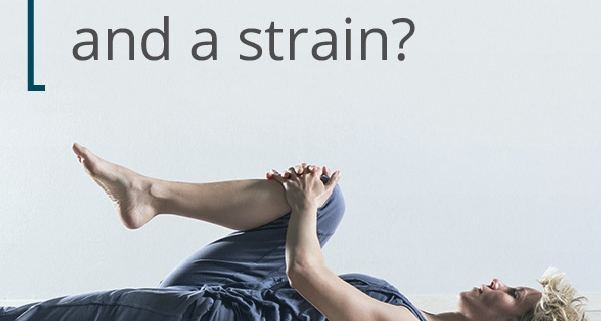Difference between a Strain & Sprain explained
Simply put – you strain a muscle and you sprain a ligament.
Muscles have a large contractile function and are responsible for creating force and moving your skeleton. When a muscle is strained, most commonly, it means that you have torn a few fibres within the muscle. This means that those fibres are broken and need to heal; that the fibres immediately surrounding the torn ones will contract in an effort to protect the damaged area from further trauma; that the muscle as a whole is unable to work properly.
When you experience a muscle strain that muscle will then be painful to contract and to stretch. You should be able to use all the other muscles around it so you may still be able to move around. Depending on how many fibres you have damaged will determine how bad the strain is, and therefore how long it will take you to recover. It is important to protect a muscle strain in its initial stage of healing to prevent further damage and to allow it to heal at an optimal length. This means avoiding any painful contracting or stretching of th

at muscle for the first few days to weeks, depending on how bad the initial injury is. It is then important to gradually load the muscle back to full strength as it will be weak following the injury. Loading it too much or to soon could lead to further damage. Not loading it enough will leave residual weakness and leave you susceptible to reinjury in the future.
A ligament does not contract. It is responsible for holding a joint in place and runs from one bone to another. Typically, each ligament is designed to be strong in a certain direction to withstand any forces put on the joint in that direction, and to limit excessive movement. This ensures that when a muscle contracts it moves the skeleton in a specific, predictable direction. It also limits the amount of unnecessary compression or shearing forces going through the joint, to minimise wear a tear.
When a ligament is sprained it loses some of its tensile strength and becomes easier to stretch. This hurts, and it makes the joint less stable and the ligament susceptible to further injury. With a ligament sprain it is good to keep doing regular gentle range of movement exercises and static strengthening to help keep the muscles active to compensate for the ligament injury. Dependent on which ligament you injure and how bad it is you may benefit from some strapping or a brace to help support the joint whilst it heels. Once the ligament is more stable it is important to do some rehab exercises to get the joint strong and balanced again.



